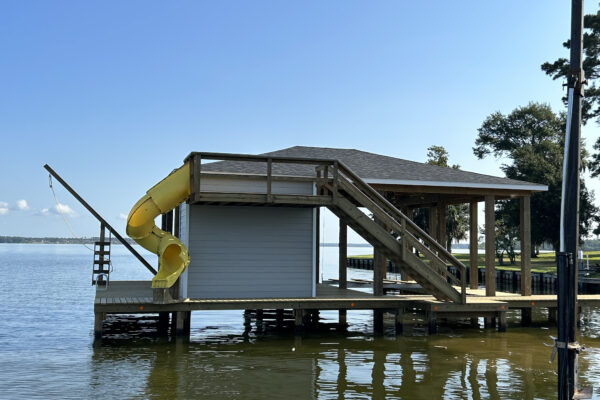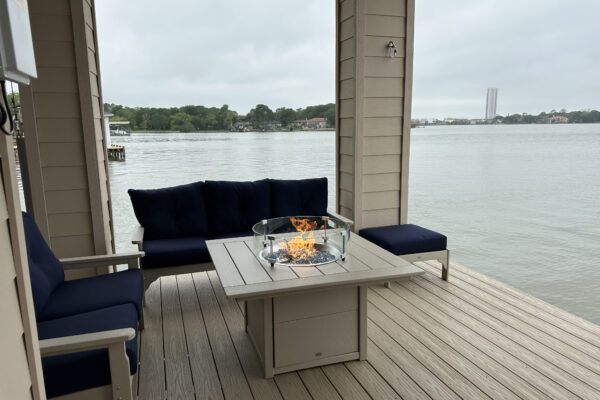The Rise of Floating Docks in Waterfront Living
Let’s start with the obvious. Waterfront living isn’t just about the view—it’s about access. Easy, reliable access to the water. That’s where floating docks come in. Unlike old-school fixed docks, they don’t stay stuck at one height, fighting with changing tides and water levels. They move. They rise and fall with the water. That’s a game changer if you’re tired of stepping down—or climbing up—every time you hit the dock. Floating docks have started creeping into more conversations because they solve real problems that boat owners have been dealing with for decades.
Boat Dock Construction Has Come a Long Way
Boat dock construction isn’t what it used to be. Years ago, it was heavy timbers, a lot of digging, and hope the weather didn’t tear it apart in five years. Now, things have shifted. Technology, materials, even design ideas have improved. Floating docks aren’t some fancy fad. They’re practical. They’re built with modular sections, durable floatation, and designs that take a beating but keep standing. Let’s be real, the old methods aren’t dead, but they’ve got stiff competition now. People want docks that don’t cost a fortune to maintain.

The Flexibility Factor Nobody Talks Enough About
The truth is, water isn’t predictable. It rises, it drops, it moves fast, it gets calm. Fixed docks fight the water. Floating docks go with it. That flexibility means less stress when storms come through, less damage when the lake level decides to play games, and way less headache for the owner. You don’t have to rebuild every few years because of warped boards or rotted piles. They just last longer. That’s the flexibility factor—and it saves money, plain and simple.
Why Maintenance Really Matters in Dock Choices
Let’s be blunt. Boat dock construction is an investment. And with investments, what you’re really paying for long-term is maintenance. Floating docks need less of it. That’s not marketing fluff, it’s reality. No constant sanding, sealing, or replacing boards. No calling contractors every summer for repairs. That doesn’t mean they’re indestructible. Nothing is. But compared to traditional setups, they demand less of your time, and less of your wallet. And most boaters would rather be on the water than under the dock with a toolbox.
The Design Side of Floating Docks
Floating docks don’t just function better—they can look damn good too. Modern boat dock construction takes into account how people actually use the space. You want a dock for fishing? Done. A dock for entertaining with space for chairs and coolers? Easy. Modular floating docks can be laid out however you want. T-shape, L-shape, straight line, whatever works. You don’t get stuck with a cookie-cutter dock just because of the shoreline layout. They adapt, and that’s a big selling point.
Durability in Real-World Conditions
Here’s the deal: docks take abuse. Sun, water, storms, ice—it all adds up. The reason floating docks are turning heads is because they handle that abuse better than most fixed systems. The floats are usually made of high-density polyethylene. That stuff doesn’t corrode, doesn’t rot, doesn’t crumble after a few seasons. Add in treated decking and strong connectors, and you’ve got a system that’s built to last. Real-world durability matters because replacing a dock isn’t cheap. Most owners want it built once and built right.
Boat Dock Construction and the Environmental Angle
Let’s not ignore this. Boat dock construction used to tear up shorelines. Heavy machinery, piles driven deep, concrete poured everywhere—it wasn’t always gentle on the environment. Floating docks are lighter on the land. They don’t need the same kind of invasive install. Less digging, less disturbance, more respect for the shoreline. For a lot of property owners, that’s becoming more important. Nobody wants to wreck their waterfront just to have a place to tie up the boat. Floating docks offer a smarter, lighter touch.

Cost Isn’t Just About Upfront Numbers
People ask, “Are floating docks cheaper?” Short answer: sometimes. Long answer: depends. Sure, initial costs can look similar to traditional docks, maybe even higher in some cases. But here’s the kicker—long-term costs are way lower. Less maintenance, fewer repairs, longer lifespan. Over 10 or 15 years, floating docks often win the cost game. So if you’re only looking at the sticker price, you’re missing the point. Think total cost of ownership. That’s what matters when you’re making decisions about boat dock construction.
The Future of Dock Construction Is Modular
Modularity is the buzzword here. Floating docks are built in sections, like puzzle pieces. That means you can expand them later. Add a slip. Add a fishing platform. Build out a bigger space when your needs change. You don’t have to rip out the whole dock just to make adjustments. That’s a massive difference compared to traditional builds. Once you pour concrete and drive pilings, that’s it. You’re locked in. Floating docks keep the door open for changes. Flexibility isn’t just about the water, it’s about your lifestyle too.
Safety on the Water’s Edge
Safety matters. Slippery, uneven fixed docks have sent more than a few people into the drink. Floating docks tend to sit more level with the waterline, making it easier to board boats safely. Plus, they can be surfaced with non-slip decking materials, which is a big deal if kids or older family members use the dock. Some even have built-in cleats, ladders, or bumpers. It’s the small details that make boating life smoother—and safer.
Why More Boat Owners Are Making the Switch
The bottom line? Floating docks are just practical. They’re reliable, flexible, and they keep up with changing water levels. They’re not perfect. No dock system is. But compared to old fixed docks, they make more sense for a lot of situations. The switch is happening because boat owners are tired of fighting with docks that don’t adapt, don’t last, and cost too much to keep alive. When people see the benefits firsthand, it’s hard to go back.
Wrapping It Up: The Smarter Choice Ahead
So, is the future of boat dock construction floating? Looks that way. They’re adaptable, durable, less damaging to shorelines, and easier to maintain. They give boaters what they actually need—reliable access without constant hassle. If you’re looking at upgrading or building new, it’s worth giving floating docks a serious look. The smarter choice is often the one that makes life simpler, not harder.
FAQs About Floating Docks and Boat Dock Construction
What are floating docks made of?
Most floating docks use high-density polyethylene floats combined with aluminum or treated lumber decking. They’re built tough to handle weather and water.
Do floating docks last longer than fixed docks?
In many cases, yes. Because they move with the water, they don’t suffer the same structural stress that fixed docks do. Less damage over time means longer lifespan.
Are floating docks safe in storms?
Nothing is storm-proof, but floating docks ride with the water rather than fighting it. That gives them a better chance of surviving rough conditions compared to rigid fixed docks.
How much do floating docks cost compared to fixed docks?
Upfront costs can be similar, sometimes a little higher. But over the long run, floating docks often end up being cheaper because they need less repair and last longer.
Can floating docks be customized?
Yes. One of their biggest advantages is modular design. You can add, remove, or reconfigure sections as your needs change.
Do floating docks work in deep water?
Absolutely. In fact, they’re often the best choice for deep-water installations where driving pilings for a fixed dock isn’t practical.




